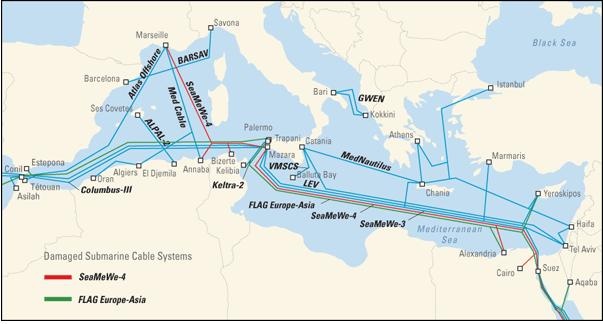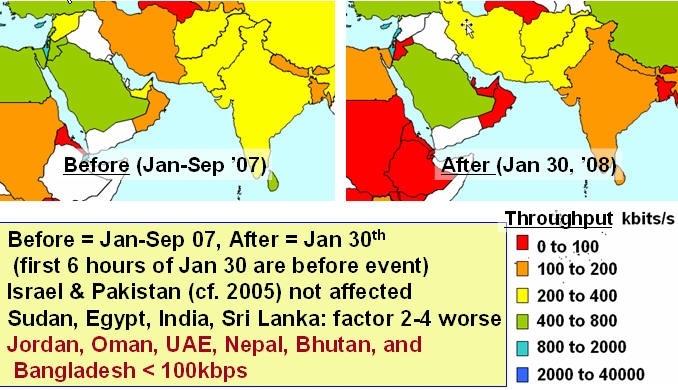...
On January 31st, 2008, the NY Times, BBC, The Guardian, CNN and many others reported undersea cable cuts in the Mediterranean. One was damaged near Alexandria, Egypt, and another in the waters off Marseille, France. The two cables were damaged within hours of each other on Wednesday morning of January 30th 2008. Operators believe the damage was caused by ship's anchors during a heavy storm at sea. One of the cables, Sea Me We 4, is owned by 16 telecommunications companies along its route. The second cable, known as the Flag (for Fiber-optic Link Around the Globe) System, runs from Britain to Japan. The cables are separately managed and operated. The outages mainly affected the Middle East and Asia. Most disrupted communications were quickly rerouted through the remaining SEAMEW3 cable or fibres taking the other way around the globe. The cables involved are shown in the Telegeography map below. There are also world maps from Telegeography and Alcatel.
We decided to look at the impact on Internet connectivity as seen by the PingER project measurements.
...
Another view of the changes is seen in the map below showing the throughputs before (Jan-Sep 2007) and after (Jan 30 2008). Bear in mind that the fact the outage did not start until around 6:00am, and re-routing traffic before the end of the day will both dilute the effect. Also the effects were not uniform on all hosts in a country.
It is interesting that some countries such as Pakistan were mainly unaffected, despite the impact on neighboring countries such as India. This contrasts dramatically to the situation in June - July 2005, when due to a fibre cut of SEAMEWE3 off Karachi, Pakistan lost all terrestrial Internet connectivity which resulted, in many cases, in a complete 12 day outage of services. This is a tribute to the increased redundancy of international fibre connectivity installed for Pakistan in the last few years.
...

